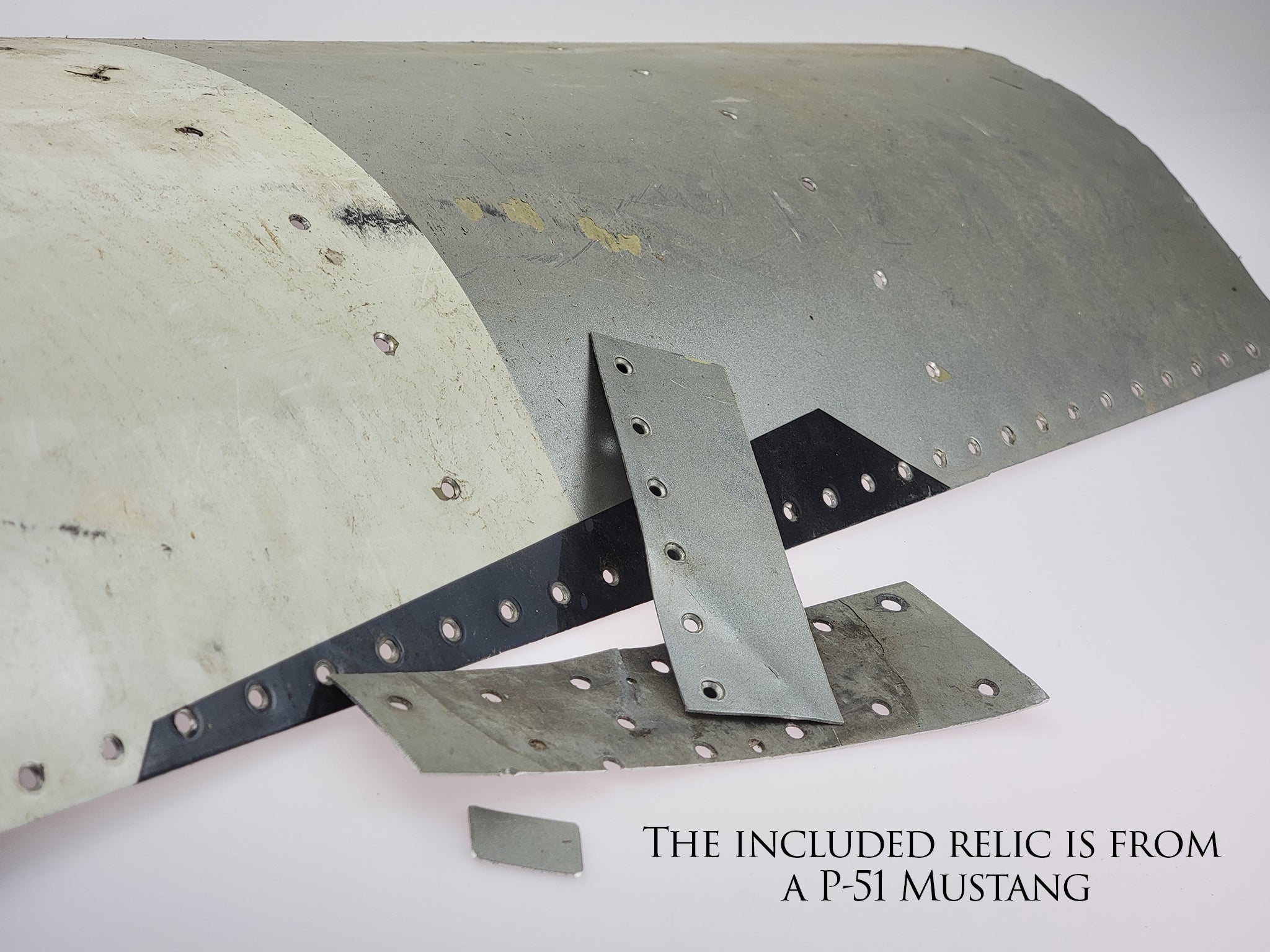This Fine Art Print by Artist Craig Tinder commemorates the pilot Maj. "Pete" Peterson and includes a one-of-a-kind relic.
Details About the RELIC:
This specific P-51D-25-NA Mustang fragment came from a fuselage panel of aircraft Construction No. 122-40530 (N51TH). Due to corrosion and age, these original skin panels were replaced in the early 2000s during the restoration of N51TH.
 Relic from a P-51 Mustang used in the "Hurry Home Honey" canvas art
Relic from a P-51 Mustang used in the "Hurry Home Honey" canvas art
This particular fragment of a P-51D-25-NA Mustang came from the fuselage panel of aircraft 44-73990 (Construction No. 122-40530). Built in 1944, it initially served with the US Army Air Force before being transferred to the Royal Canadian Air Force in 1951.
After changing hands several times, the aircraft eventually joined the air racing circuit under the name "Pigeon Chaser." It was flown by the legendary R.A. "Bob" Hoover as the pace plane for the 1971 Cape May National Air Races.
From 2000 to 2015, the aircraft underwent extensive restoration and is now back as an airworthy Mustang.
The Story Behind the Print:
Major Richard A. Peterson, known as “Pete” or “Bud,” joined the newly-formed 357th Fighter Group at Tonopah, Nevada, as a 2nd Lieutenant and pilot. When the group became operational in England in February 1944, Peterson quickly rose through the ranks and began scoring victories, becoming the Top Gun of the 364th Fighter Squadron. Over the course of the war, Peterson flew 150 combat missions across two tours and earned 15.5 confirmed victories, making him a triple ace by the end of the conflict.
 Relic from a P-51 Mustang used in the "Hurry Home Honey" canvas art
Relic from a P-51 Mustang used in the "Hurry Home Honey" canvas art
Peterson’s P-51 Mustangs were all named Hurry Home Honey, a personal tribute to his wife Elaine. The name came from the way Elaine signed off her letters to him while he was deployed, symbolizing their close bond and giving him added motivation to return safely from each mission. Peterson’s Mustangs, bearing this affectionate name, became legendary within the 357th Fighter Group as he consistently demonstrated his flying skill and leadership in the cockpit.
By the age of 21, Peterson had already earned the rank of Major and was awarded several prestigious honors, including the Distinguished Flying Cross, Air Medals, and the Silver Star. His service with the 357th Fighter Group during World War II made him one of the most successful and highly decorated pilots of the 364th Fighter Squadron.
After the war, Peterson pursued a career as a distinguished architect and remained connected to his wartime legacy. He passed away on 4 June 2000, leaving behind a legacy of bravery, skill, and dedication, with Hurry Home Honey serving as a lasting symbol of his devotion to both his mission and his family.
Learn more about American WWII Fighter Aircraft Analysis in Aerial Domination, Click Here
To purchase or see similar items, visit here.
Commissioned by Museums, Treasured by Collectors





Share:
Chasing the Sound Barrier, the story behind "Untouchable Pursuit"
Aleutian Guard, the story behind "Alaskan Tigers"